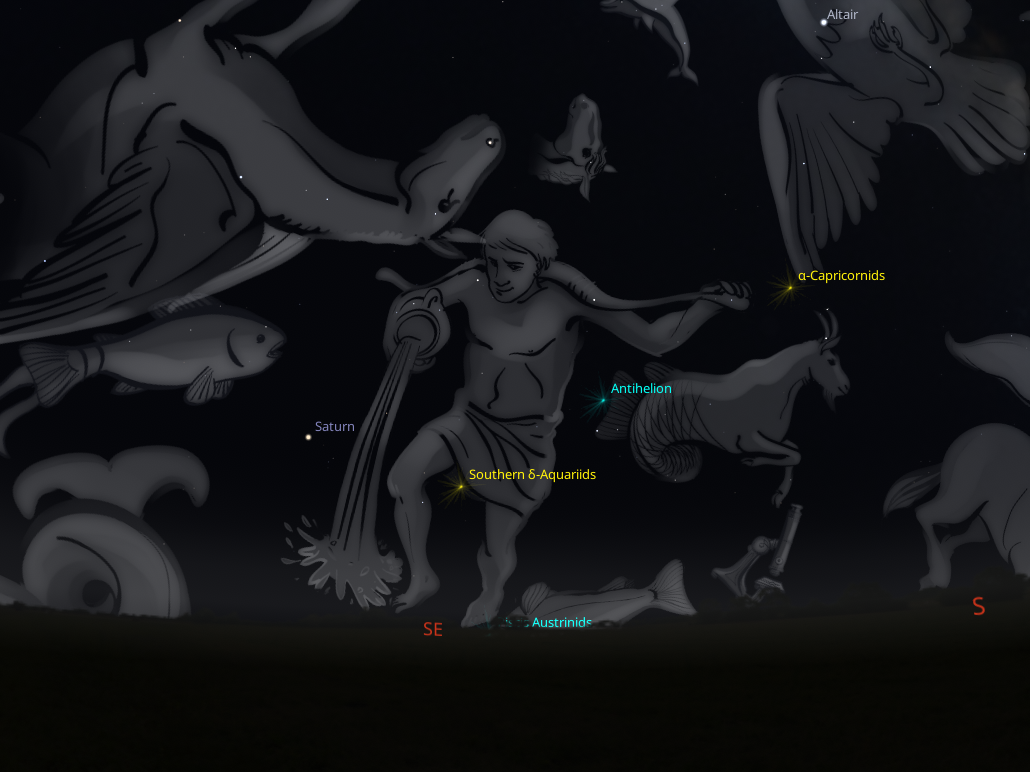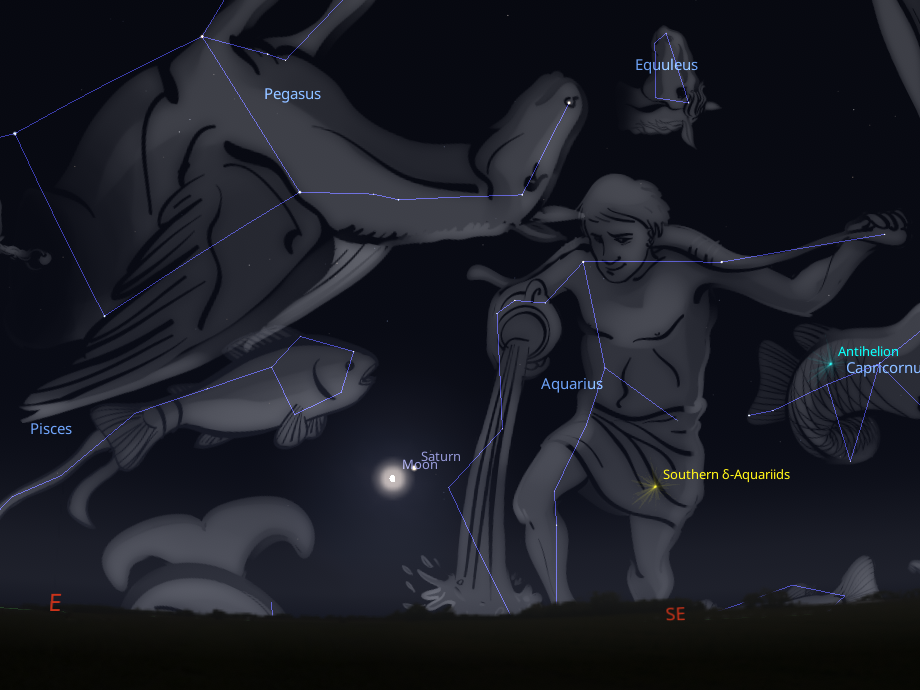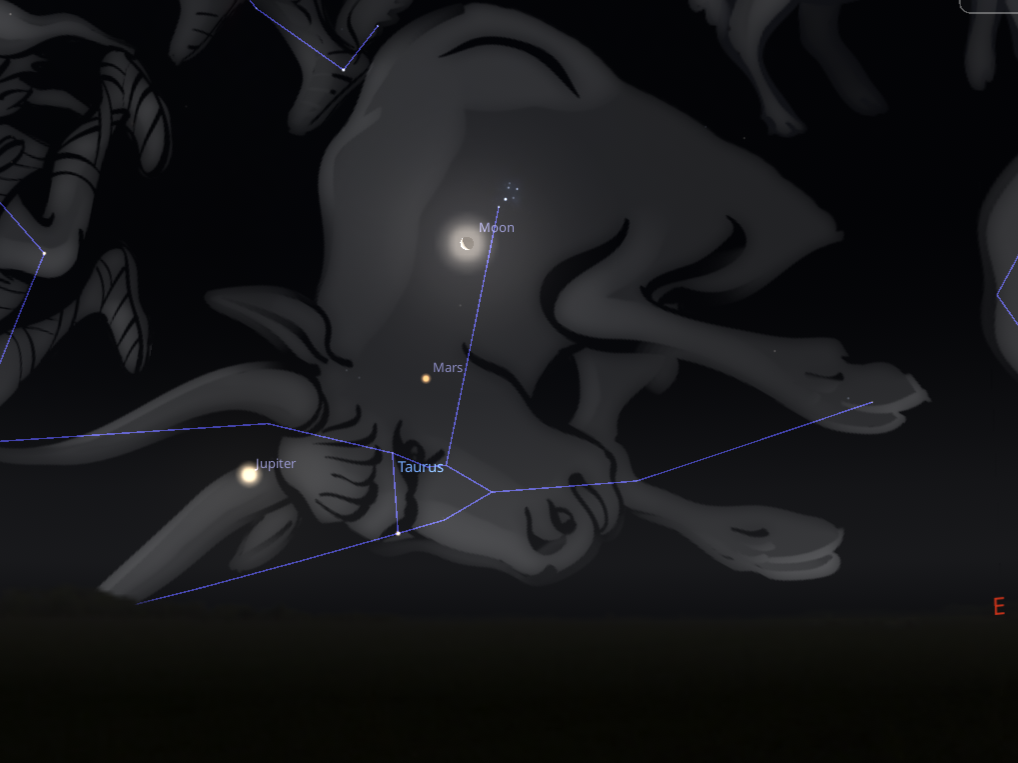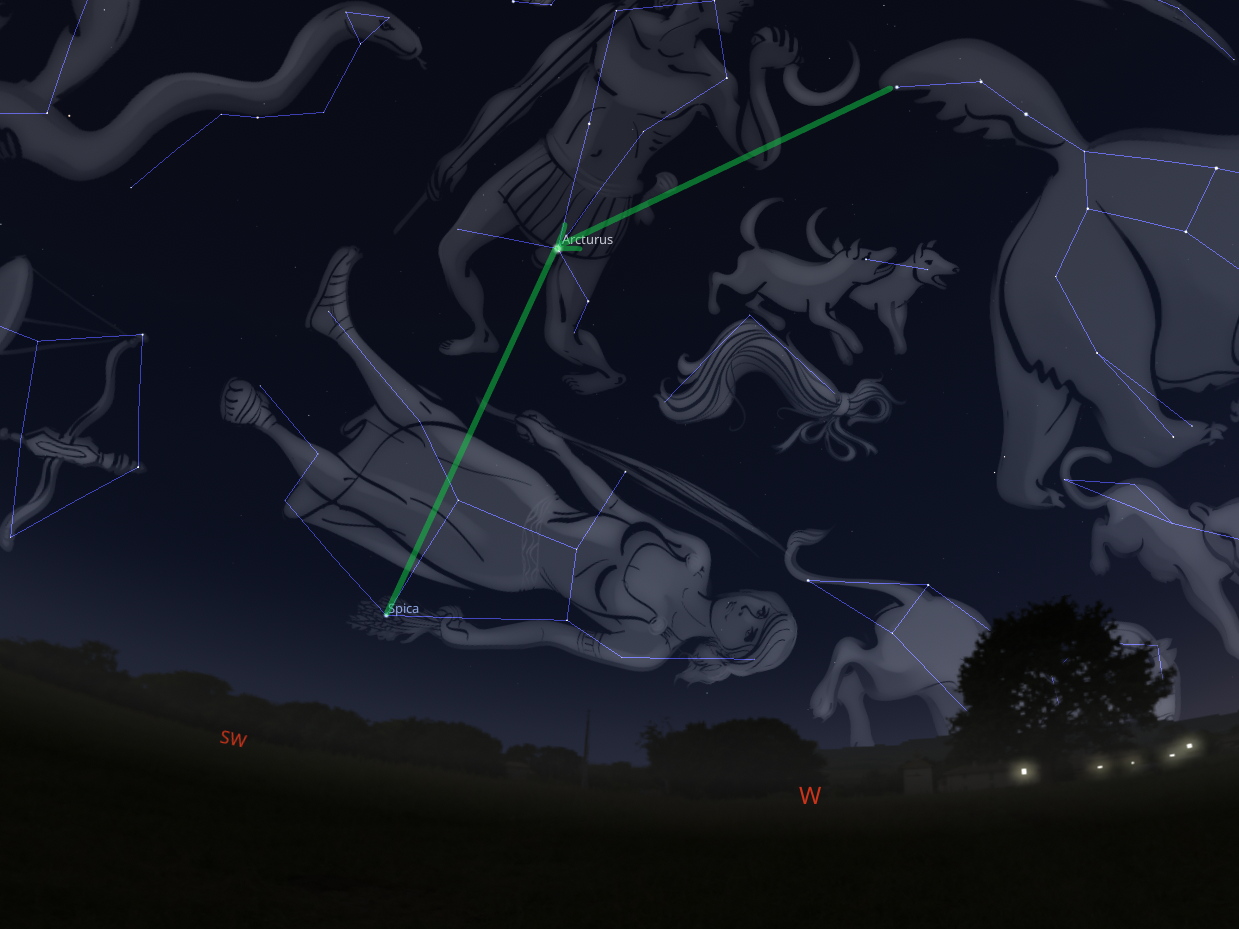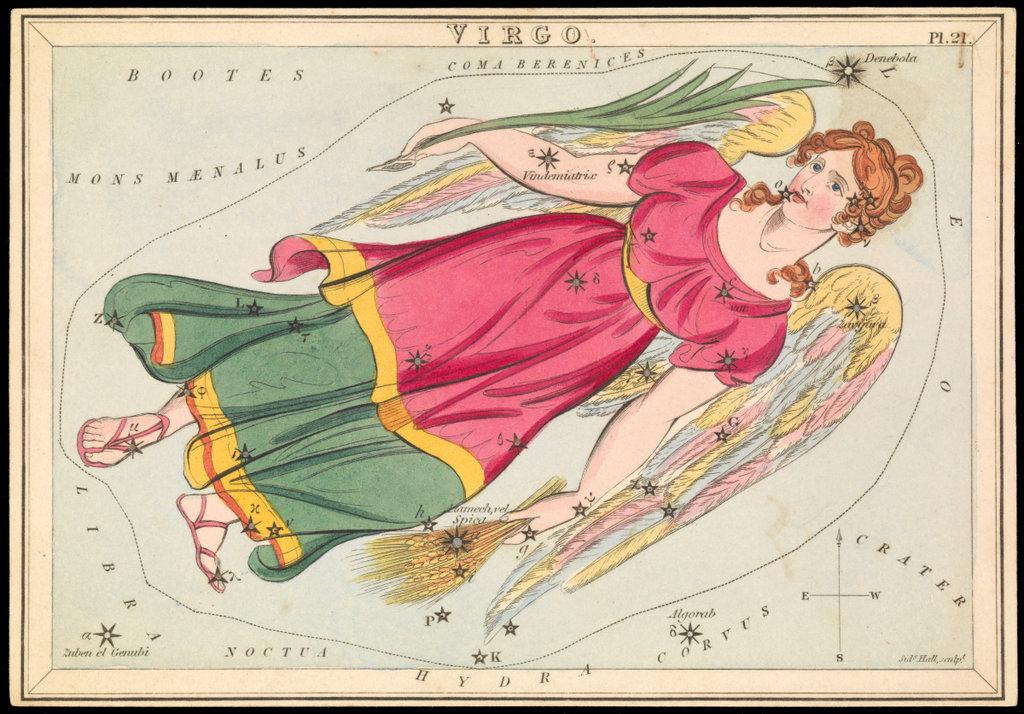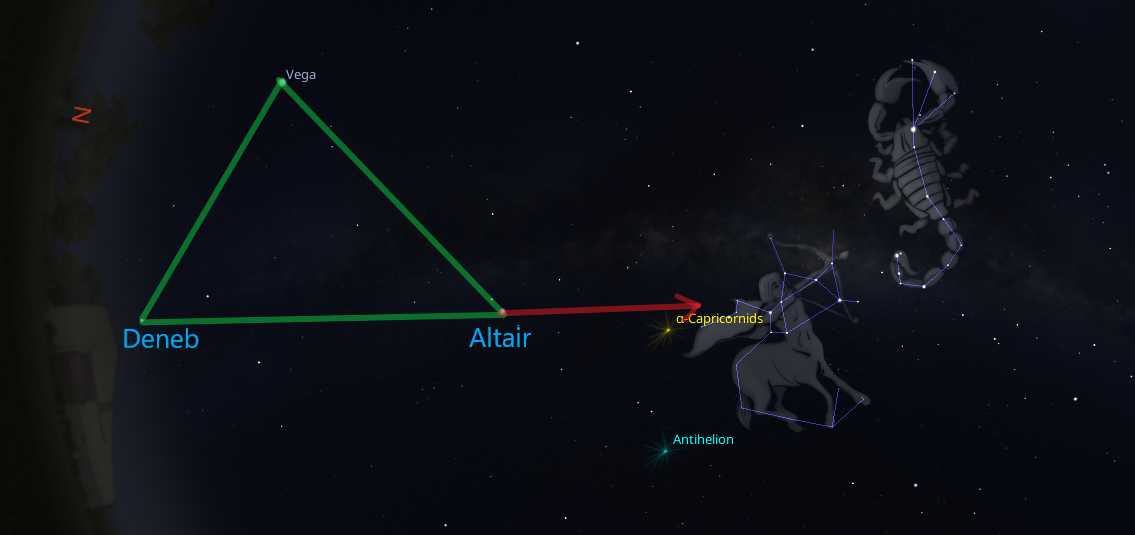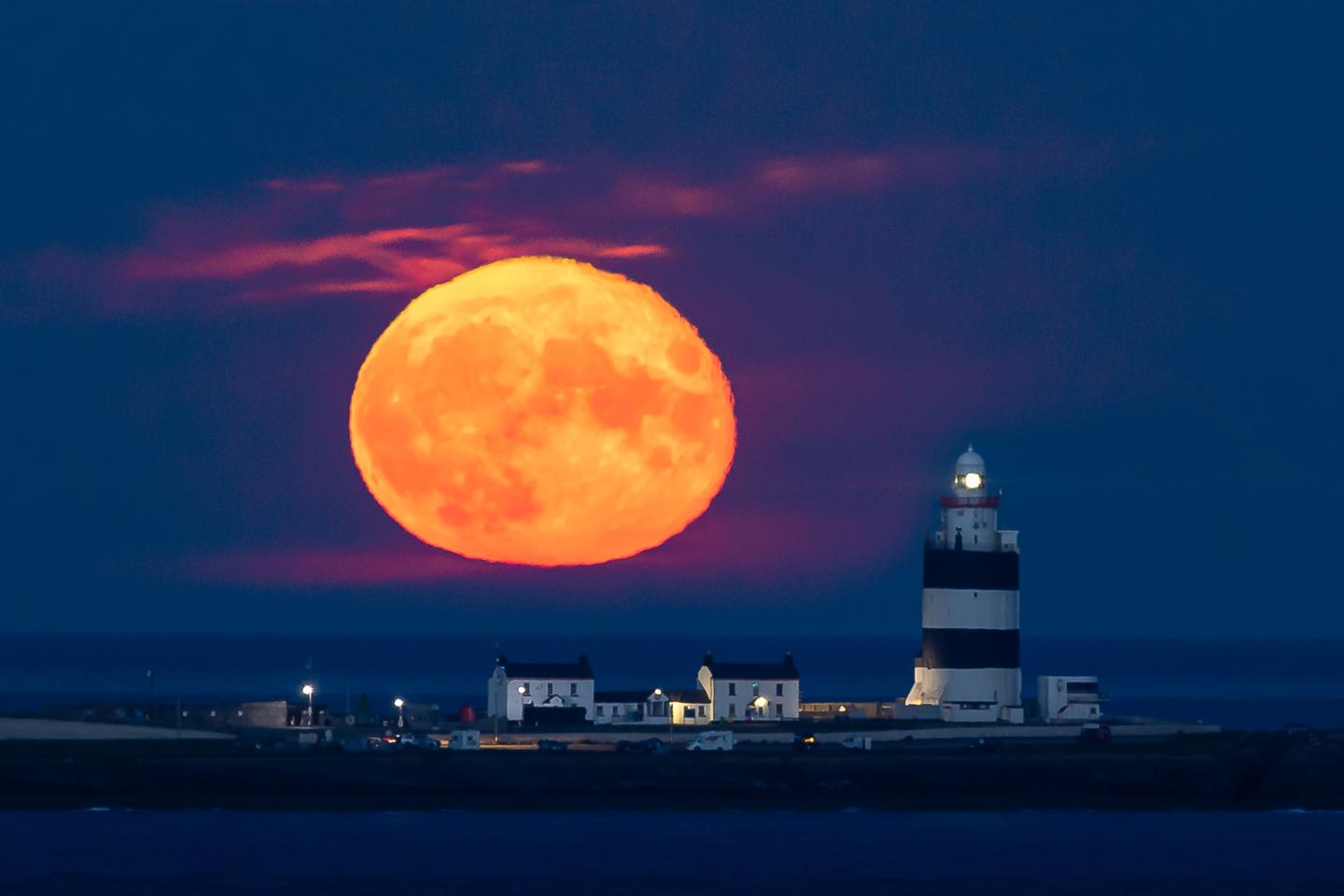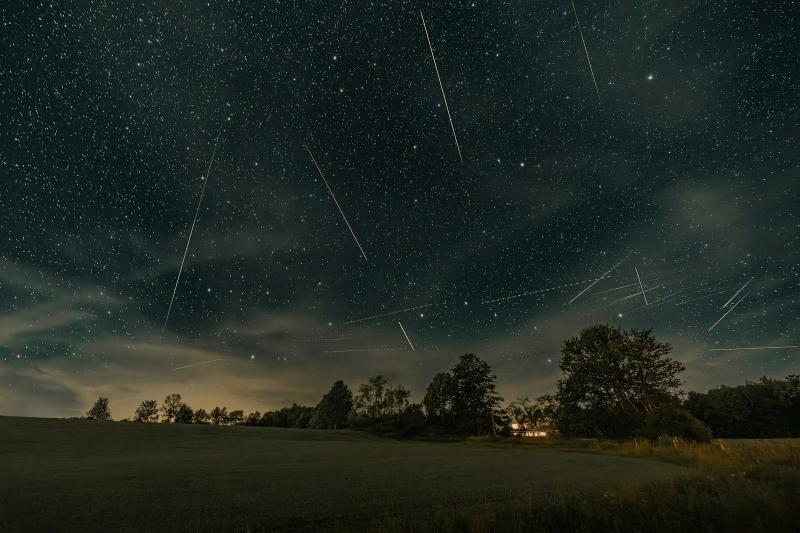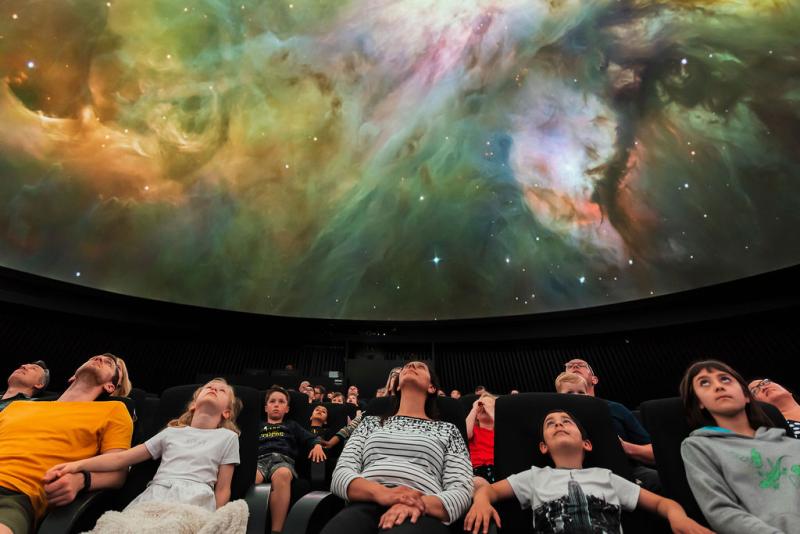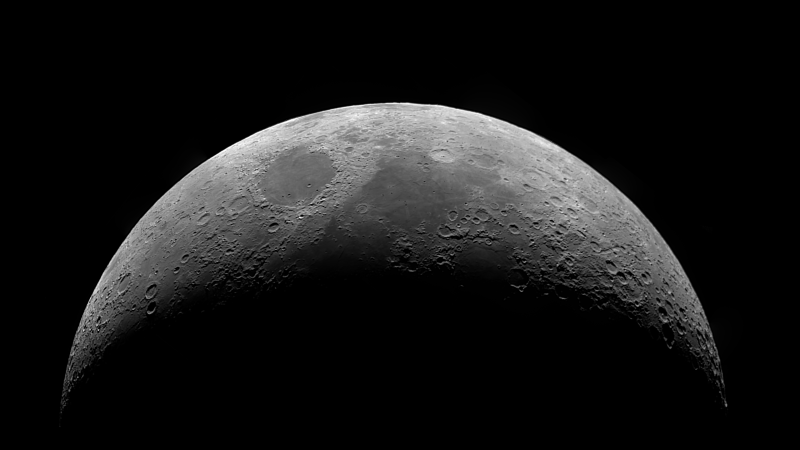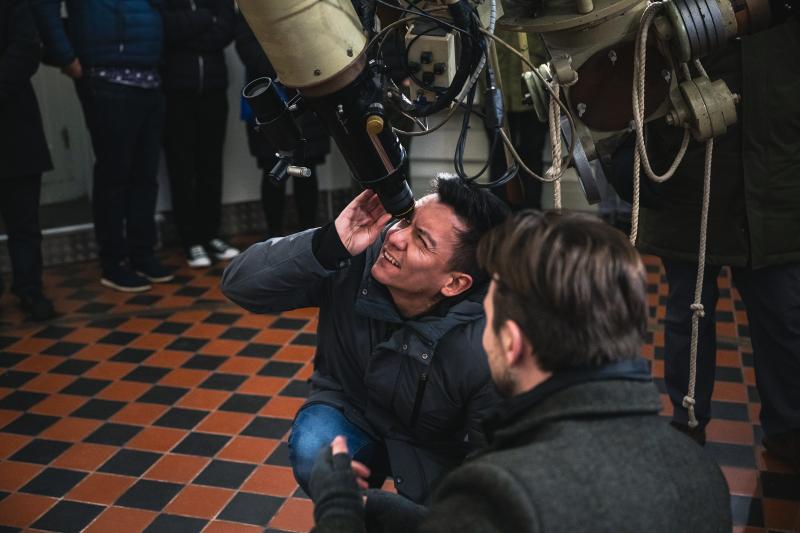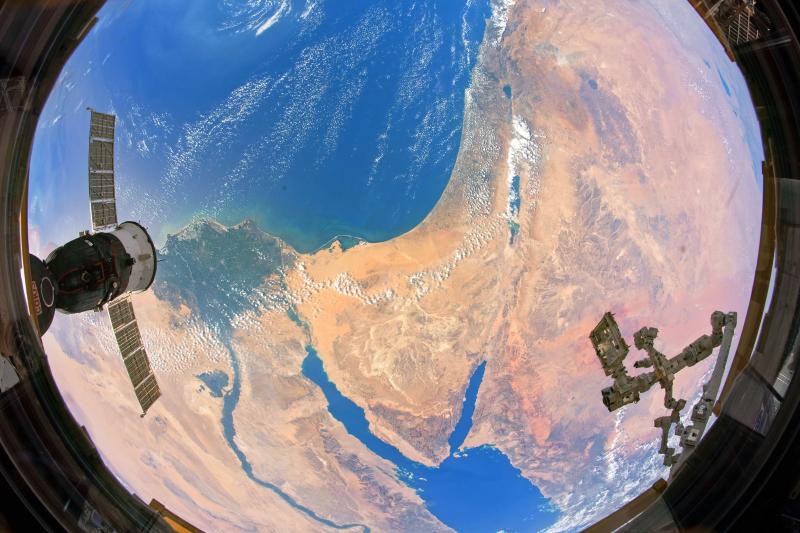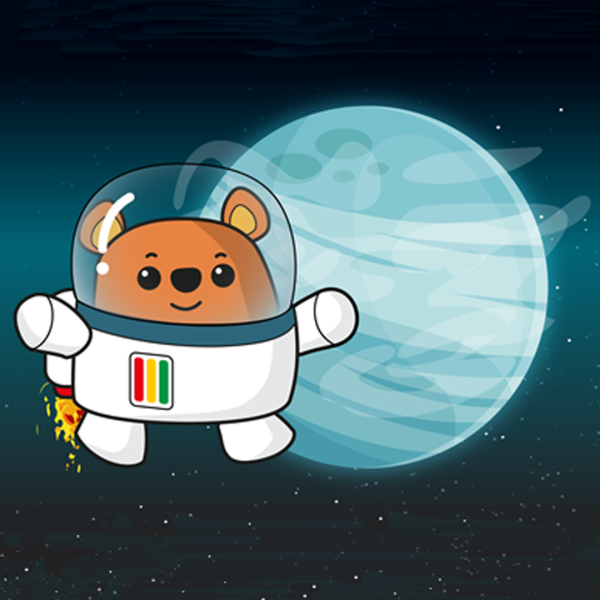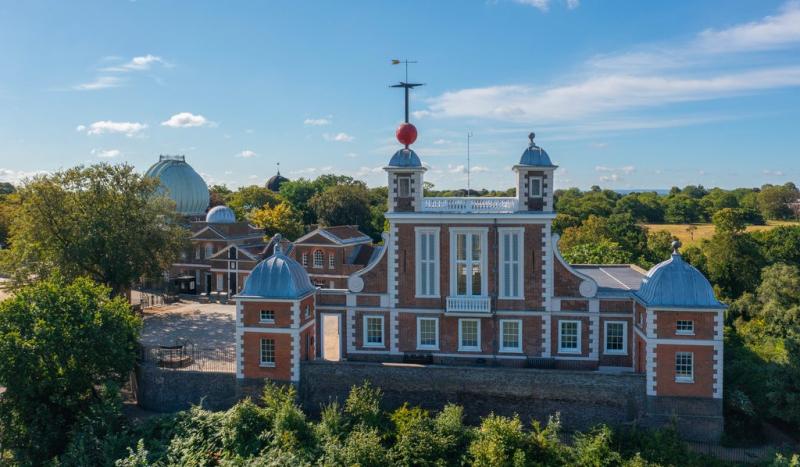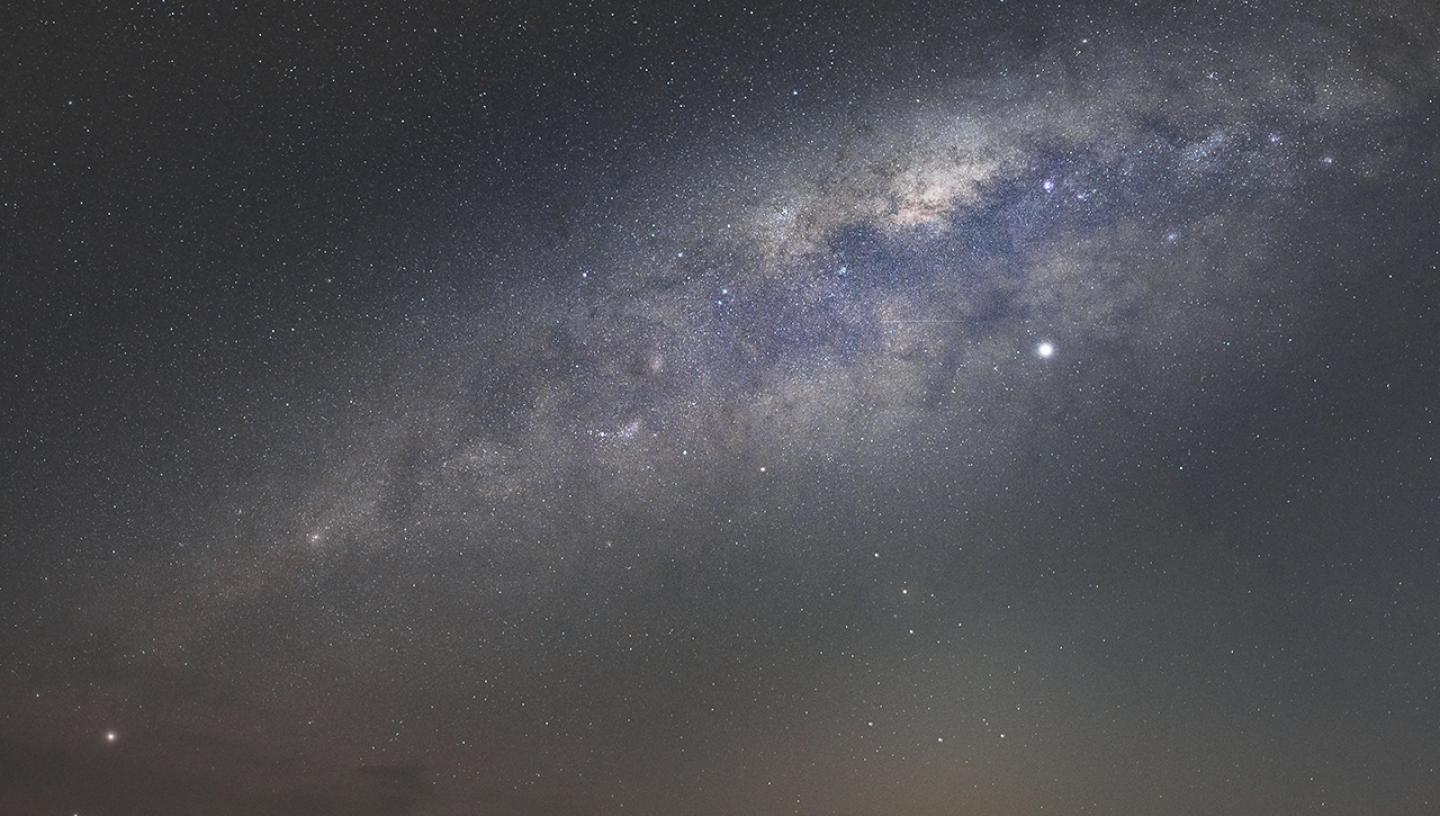
Find out what to see in the night sky this July, from meteors to a host of bright objects gathered close, and more!
Top 3 things to see in the night sky in July 2024:
- 30/31 July – the Delta Aquariid meteor shower
- 24 - 30 July – the Moon near Saturn, Uranus, the Pleiades, Jupiter and Mars!
- Throughout the month – say goodbye to Virgo
(Details given are for London and may vary for other parts of the UK.)
Look Up! Podcast
Subscribe and listen to the Royal Observatory Greenwich's podcast Look Up! As well as taking you through what to see in the night sky each month, Royal Observatory astronomers pick two space news stories to talk about. The month's news stories are the nova event we’re expecting from T Coronae Borealis, and the first ever return of lunar samples from the far side of the Moon by China’s Chang’e-6!
Delta Aquariid meteor shower
Meteor season is really kicking off this month with the start of the Delta Aquariid meteor shower which runs from 12 July to 23 August, peaking on 30 July with a maximum of 20 meteors an hour.
Meteor showers have no true physical association with their namesake stars or constellations. Delta Aquarii is a star in the constellation Aquarius, 'the water-bearer', which appears to be close to the radiant- the apparent origin of the meteors from our perspective.
But where are they actually coming from?
What we mostly see are tiny dust particles falling through the atmosphere. On the way they drag along atmospheric atoms and molecules which heat up and glow. From our point of view, we see a spark or a brief streak of light- in general, the bigger the particle, the brighter the light. These particles originate from the comets, which leave a messy trail of particles in their wake. The comet responsible for the Delta Aquariids’ mess has so far evaded confident identification, but our best guess is Comet 96P/Machholz.
Meteor shower naming conventions also double as a handy hint for viewing, as looking in the area of Delta Aquarii is good place to start sighting these meteors. To maximise your chances of seeing any, you'll want to head out during the shower’s peak, on the 30th going into 31st July. Luckily, the Moon will be a small waning crescent so its light won't steal the show. If you can't get out that night then taking a look during the new Moon is also a good way to optimise your view as it's not too far off the peak, and with the Delta Aquariids, the peak isn't dramatically different to the rest of the shower.
The key to catching a glimpse of these burning particles is patience. Settle in with a deckchair and a snack, and look skyward about 45 degrees from the radiant. The wait under the stars can be enjoyable, and the reward exciting. A bit like catching a fish. Or so I imagine, having never fished.
The Moon's nighttime tour
This month it seems the Moon has decided to take a whistle-stop tour past some night sky icons.
If you look for the Moon around midnight on 24 July you should be able to spot Saturn nearby. You'll see them rise together in the East just before 11pm on 24 July, and by midnight they'll be clear of the horizon and about one finger at arm’s length apart.
When the Moon ascends above the horizon after midnight going into the 30th, the party really will be starting. Uranus will be heading away from the Moon, just over 3 fingers away to its East. It’ll be almost on top of the Pleiades, a stunning open star cluster of young blue stars.
If you then curve your gaze towards the horizon slightly left, you'll find Mars, and then Jupiter within around the space of a fist at arm’s length.
Virgo’s farewell
This is the last month to take in the second biggest constellation before it sinks below the nighttime horizon. You can find Virgo lying down near the south western horizon diving headfirst towards where the Sun has set. A good way to star-hop your way there is with the "arc to Arcturus" method, which involves bright and therefore summer friendly stars.
First, find the Plough. At this time of year it'll be fairly low in the North Western horizon. Following the curve of the crooked 'handle' will take you to another bright star 'Arcturus'. If you continue this curve, you can find another bright star. This is Spica, located within Virgo, representing the wheat held in Virgo’s hand. The wheat tells part of the story as Virgo is popularly attributed to Demeter, the ancient Greek goddess of harvest and fertility.
Demeter and her daughter Persephone were responsible for keeping the land fertile and full of life. However, this ground to a halt when Persephone was abducted into the underworld by Hades. Unconsolable, Demeter neglected the land, causing it to plunge into its first ever winter. In a bid to save the dead world Zeus sent his messenger, Hermes, to rescue Persephone from the underworld. Unfortunately, on her way out Persephone ate six pomegranate seeds, effectively binding her to Hades in the underworld for six months of the year. For just the remaining half a year, Persephone and Demeter are allowed to reunite.
These are the months we see the world revived from the bleakness of winter and return to full bloom- the same time the constellation Virgo is up in the sky.
Personally, I prefer the interpretation that Virgo represents Persephone, who will literally sink below the horizon back into the underworld. After July you won't be able to see Virgo in her entirety. The top half of her will peak above the horizon, but by October she will be gone, back with Hades in the underworld.
This was the ancient Greek's explanation for the seasons. Click here for ours!
July 2024's sky in the Southern Hemisphere
The Southern Hemisphere is the place to be this month with its longer nights and better meteor spotting opportunities.
The previously mentioned Southern Delta Aquariids are viewed much better from the Southern Hemisphere, staying visible for longer as the radiant rises far higher and closer to the zenith.
From 9 July until the end of the month, Mercury and Venus can be spotted nearby one another following the Sun just after it has set below the western horizon.
This month is a great time to view the constellation Sagittarius. This is one of the night sky’s two centaurs, the other the more obviously named Centaurus. Sagittarius is also a fairly descriptive name, coming from the Latin for “archer”, as this constellation is most commonly interpreted as a half-man half-horse drawing his bow and arrow. It is contested which specific mythological character Sagittarius represents, but it is often seen to be the friendly centaur Chiron.
To find Sagittarius, you can look for the distinctive curve of nearby Scorpius, the scorpion at the receiving end of the centaur’s arrow. You could also look out for the bright teapot asterism made up of stars in the top section of the centaur. It even includes the Milky Way for the steam issuing from the spout. If you’re still lost, you can star-hop your way there using a line from Deneb to Altair in the summer triangle.
The Moon's phases in July 2024
New moon: 5 July (23:57)
First quarter: 13 July (23:49)
Full Moon: 21 July (11:17)
Last Quarter: 28 July (03:52)
Stargazing Tips
- When looking at faint objects such as stars, nebulae, the Milky Way and other galaxies it is important to allow your eyes to adapt to the dark so that you can achieve better night vision.
- Allow 15 minutes for your eyes to become sensitive in the dark and remember not to look at your mobile phone or any other bright device when stargazing.
- If you're using a star app on your phone, switch on the red night vision mode.
You may also be interested in
Header Image: The Four Planets and the Moon © Alice Fock Hang, winner of Young Astronomy Photographer of the Year 2020
